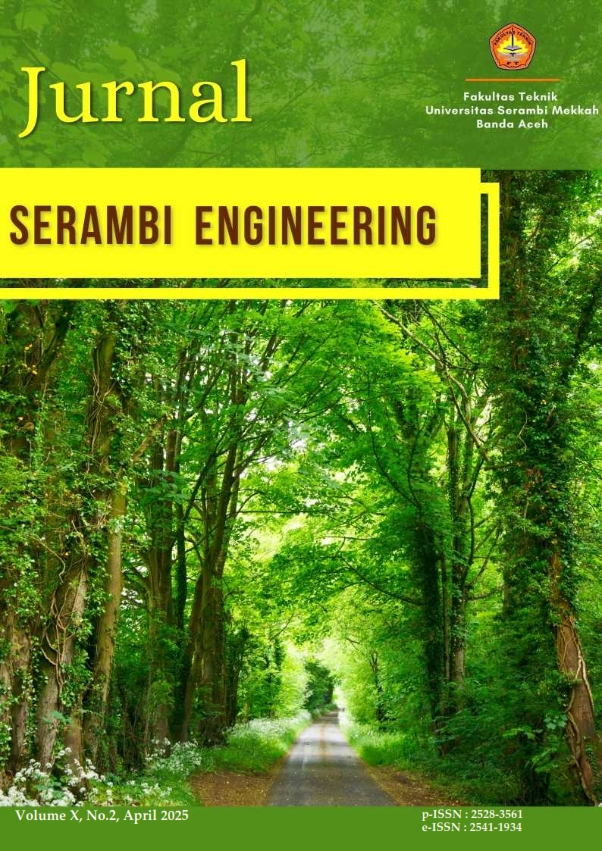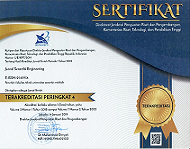Understanding The Health Hazards of Black Mold: An Overview of Environmental and Population-Based Risks
Keywords:
Black Mold, Mycotoxins, Health Effects, Potential Impact, PreventionAbstract
Black mold is a type of fungus that produces dangerous toxins known as mycotoxins, which can enter the body through inhalation, skin contact, or consumption of contaminated food. This fungus thrives in damp and dark environments and can cause various symptoms, including respiratory irritation such as cough, runny nose, sore throat, or difficulty breathing and skin problems such as rashes or itching. The research method employs a literature review approach using databases including Scopus, PubMed, Science Direct, SpringerLink, JSTOR, PlosONE, Google Scholar, and SINTA. This study examines the potential health risks of black mold, focusing on environmental exposure, vulnerable populations, health effects, and remediation strategies. The literature review reveals that black mold exposure frequently occurs in damp indoor spaces. Populations at greater risk include children, the elderly, individuals with weakened immune systems, and those with chronic respiratory diseases. Health effects range from mild symptoms, such as eye and nasal irritation, to severe conditions like lung infections and neurological disorders, especially with prolonged exposure. This study concludes that black mold poses significant health risks and emphasizes the importance of prevention and timely remediation to address indoor mold contamination.
References
[1] M. J. Mendell, A. G. Mirer, K. Cheung, M. Tong, and J. Douwes, “Respiratory and allergic health effects of dampness, mold, and dampness-related agents: A review of the epidemiologic evidence,” Environ. Health Perspect., vol. 119, no. 6, pp. 748–756, 2011, doi: 10.1289/ehp.1002410.
[2] W. M. Haschek and K. A. Voss, Haschek and Rousseaux’s Handbook of Toxicologic Pathology (Third Edition), III. Academic Press, 2013. doi: https://doi.org/10.1016/C2010-1-67850-9.
[3] S. G. Mariusz Dyląg, Klaudyna Spychała, Jessica Zielinski, Dominik Łagowski, “Update on Stachybotrys chartarum—Black Mold Perceived as Toxigenic and Potentially Pathogenic to Humans,” Biology (Basel)., vol. 11, no. 3, p. 352, 2022, doi: https://doi.org/10.3390/biology11030352.
[4] Disaster Recovery Services, Black Mold Stachybotrys Chartarum. Anaheim, 2018.
[5] J. H. Rosenblum Lichtenstein et al., “Environmental mold and mycotoxin exposures elicit specific cytokine and chemokine responses,” PLoS One, vol. 10, no. 5, pp. 1–22, 2015, doi: 10.1371/journal.pone.0126926.
[6] A. Pert, “A Literature Analysis on Stachybotrys chartarum and Connections to Sick Building Syndrome,” Res. J. Heal. Nat. Sci., vol. 12, no. 1, 2022, doi: https://doi.org/10.5206/wurjhns.2022-23.5.
[7] C. F. Harding et al., “Mold inhalation causes innate immune activation, neural, cognitive and emotional dysfunction,” Brain. Behav. Immun., vol. 87, pp. 218–228, 2020, doi: 10.1016/j.bbi.2019.11.006.
[8] J. R. H. James J Pestka, Iwona Yike, Dorr G Dearborn, Marsha D W Ward, “Stachybotrys chartarum, trichothecene mycotoxins, and damp building-related illness: new insights into a public health enigma,” Toxicol. Sci., vol. 104, no. 1, pp. 4–26, 2008, doi: https://doi.org/10.1093/toxsci/kfm284.
[9] J. Bailey, A. Oliveri, and E. Levin, “Features of Severe Asthma in School-Age Children: Atopy and Increased Exhaled Nitric Oxide,” J. Allergy Clin. Immunol., vol. 23, no. 1, pp. 1–7, 2013, doi: 10.1016/j.jaci.2006.08.019.Features.
[10] Z. A. Binti Mohamad, “Stachybotrys chartarum: its identification and response to antimicrobial treatment and prevention,” University College London, 2018.
[11] M. S. Dykewicz, J. M. Rodrigues, and R. G. Slavin, “Allergic fungal rhinosinusitis,” J. Allergy Clin. Immunol., vol. 142, no. 2, pp. 341–351, 2018, doi: 10.1016/j.jaci.2018.06.023.
[12] J. E. S. K C McCrae, T G Rand, R A Shaw, H H Mantsch, M G Sowa, J A Thliveris, “DNA fragmentation in developing lung fibroblasts exposed to Stachybotrys chartarum (atra) toxins,” Pediatr. Pulmonol, vol. 42, no. 7, p. 592, 2007, doi: 10.1002/ppul.20608.
[13] R. M. N. Ari Bitnun, “Stachybotrys chartarum (atra) contamination of the indoor environment: Health implications,” Pediatr. Child Heal., vol. 4, no. 2, pp. 125–129, 1999, doi: 10.1093/pch/4.2.125.
[14] M. Dylag, K. Spychała, J. Zielinski, D. Łagowski, and S. Gnat, “Update on Stachybotrys chartarum—Black Mold Perceived as Toxigenic and Potentially Pathogenic to Humans,” Biology (Basel)., vol. 11, no. 3, 2022, doi: 10.3390/biology11030352.
[15] A. M. Ratnaseelan, I. Tsilioni, and T. C. Theoharides, “Effects of Mycotoxins on Neuropsychiatric Symptoms and Immune Processes,” Clin. Ther., vol. 40, no. 6, pp. 903–917, 2018, doi: 10.1016/j.clinthera.2018.05.004.
[16] C. Chang and M. E. Gershwin, “The Myth of Mycotoxins and Mold Injury,” Clin. Rev. Allergy Immunol., vol. 57, no. 3, pp. 449–455, 2019, doi: 10.1007/s12016-019-08767-4.
[17] S.-H. Cho, S.-C. Seo, D. Schmechel, S. A. Grinshpun, and Tiina Reponen, “Aerodynamic characteristics and respiratory deposition of fungal fragments,” Atmos. Environ., vol. 39, pp. 5454–5465, 2005, doi: :110.1016/j.atmosenv.2005.05.042.
[18] I. Eguiluz-Gracia et al., “The need for clean air: The way air pollution and climate change affect allergic rhinitis and asthma,” Allergy Eur. J. Allergy Clin. Immunol., vol. 75, no. 9, pp. 2170–2184, 2020, doi: 10.1111/all.14177.
[19] L. T. Franco, A. Ismail, A. Amjad, and C. A. F. de Oliveira, “Occurrence of toxigenic fungi and mycotoxins in workplaces and human biomonitoring of mycotoxins in exposed workers: a systematic review,” Toxin Rev., vol. 0, no. 0, pp. 1–16, 2020, doi: 10.1080/15569543.2020.1795685.
[20] D. Caillaud et al., “Indoor mould exposure, asthma and rhinitis: Findings from systematic reviews and recent longitudinal studies,” Eur. Respir. Rev., vol. 27, no. 148, 2018, doi: 10.1183/16000617.0137-2017.
[21] S. H. William Bowman, Ecology, VI. Oxford University Press (OUP), 2023.
[22] S. N. Clark, H. C. Y. Lam, E. J. Goode, E. L. Marczylo, K. S. Exley, and S. Dimitroulopoulou, “The Burden of Respiratory Disease from Formaldehyde, Damp and Mould in English Housing,” Environ. - MDPI, vol. 10, no. 8, pp. 1–24, 2023, doi: 10.3390/environments10080136.
[23] M. M. Simatupang, E. Veronika, A. Irfandi, and V. Azteria, “Potential Impacts of Lead on Health: a Review of Environmental Exposure, Population At Risk, and Toxic Effects,” J. Kesehat. Lingkung., vol. 16, no. 3, pp. 277–288, 2024, doi: 10.20473/jkl.v16i3.2024.277-288.
[24] G. Juel Holst et al., “Household dampness and microbial exposure related to allergy and respiratory health in Danish adults,” Eur. Clin. Respir. J., vol. 7, no. 1, 2020, doi: 10.1080/20018525.2019.1706235.
[25] J. Pizzorno and A. Shippy, “Is mold toxicity really a problem for our patients? Part 2-nonrespiratory conditions,” Integr. Med., vol. 15, no. 3, pp. 8–14, 2016.
[26] K. Isiugo et al., “Indoor particulate matter and lung function in children,” Sci. Total Environ., vol. 663, no. 1, pp. 408–417, May 2019, doi: 10.1016/j.scitotenv.2019.01.309.
[27] C.-G. J. Sahakian NM, Park JH, “Dampness and mold in the indoor environment: implications for asthma,” Immunol. Allergy Clin. North Am., vol. 28, no. 3, pp. 485–505, 2008, doi: 10.1016/j.iac.2008.03.009.
[28] Z. Zhang, H. Xu, J. Zhou, and X. Cao, “The impact of mold exposure on anxiety symptoms in the older adults: A moderated mediation model based on CLHLS,” Ecotoxicol. Environ. Saf., vol. 284, no. September, p. 116967, 2024, doi: 10.1016/j.ecoenv.2024.116967.
[29] M. Pattipeilohy and A. Pelamonia, “The Identification and Role pf Mold in Lowering the HCN Levels in Black Cassava Based on the Immersion Duration,” IOP Conf. Ser. Earth Environ. Sci., vol. 1041, no. 1, 2022, doi: 10.1088/1755-1315/1041/1/012016.
[30] Department of Health and Mental Hygiene, How To Prevent and Get Rid of Mold in the Home. United States of America: CDC, 2018.
[31] J. R. Köhler, B. Hube, R. Puccia, A. Casadevall, and J. R. Perfect, “Fungi that infect humans,” The Fungal Kingdom, pp. 813–843, 2017, doi: 10.1128/9781555819583.ch39.
[32] M. Wolf and P. S. Lai, “Indoor Microbial Exposures and Chronic Lung Disease: From Microbial Toxins to the Microbiome,” Clin. Chest Med., vol. 41, no. 4, pp. 777–796, 2020, doi: 10.1016/j.ccm.2020.08.005.
[33] T. Menneer, M. Mueller, R. A. Sharpe, and S. Townley, “Modelling mould growth in domestic environments using relative humidity and temperature,” Build. Environ., vol. 208, no. July 2021, p. 108583, 2022, doi: 10.1016/j.buildenv.2021.108583.
[34] M. Brandt et al., Mold prevention strategies and possible health effects in the aftermath of hurricanes and major floods., vol. 55, no. RR-8. 2006.
[35] J. Cox et al., “Quantitative and semiquantitative estimates of mold exposure in infancy and childhood respiratory health,” Environ. Epidemiol., vol. 4, no. 4, 2020, doi: 10.1097/EE9.0000000000000101.
[36] A. Jagels et al., “Artificial vs natural Stachybotrys infestation—Comparison of mycotoxin production on various building materials,” Indoor Air, vol. 30, no. 6, pp. 1268–1282, 2020, doi: 10.1111/ina.12705.
[37] W. J. Fisk, E. A. Eliseeva, and M. J. Mendell, “Association of residential dampness and mold with respiratory tract infections and bronchitis: a meta-analysis,” Environ. Heal., vol. 9, no. 72, pp. 1–11, 2010, doi: https://doi.org/10.1186/1476-069X-9-72.
[38] A. Głobińska et al., “Mechanisms of allergen-specific immunotherapy: Diverse mechanisms of immune tolerance to allergens,” Ann. Allergy, Asthma Immunol., vol. 121, no. 3, pp. 306–312, 2018, doi: 10.1016/j.anai.2018.06.026.
[39] C. Tischer, C. M. Chen, and J. Heinrich, “Association between domestic mould and mould components, and asthma and allergy in children: A systematic review,” Eur. Respir. J., vol. 38, no. 4, pp. 812–824, 2011, doi: 10.1183/09031936.00184010.
[40] W. J. Fisk, W. R. Chan, and A. L. Johnson, “Does dampness and mold in schools affect health? Results of a meta-analysis,” Indoor Air, vol. 29, no. 6, pp. 895–902, 2019, doi: 10.1111/ina.12588.
[41] M. A. G. D M Kuhn, “Indoor mold, toxigenic fungi, and Stachybotrys chartarum: infectious disease perspective,” Clin Microbiol, vol. 16, no. 1, pp. 144–72, 2003, doi: 10.1128/CMR.16.1.144-172.2003.
[42] T. Tuuminen and J. Lohi, “Immunological and toxicological effects of bad indoor air to cause dampness and Mold Hypersensitivity Syndrome,” AIMS Allergy Immunol., vol. 2, no. 4, pp. 190–204, 2018, doi: 10.3934/allergy.2018.4.190.
[43] W. Naffaa, “Removing the Toxic Black Mold Caused by Stachybotrys Chartarum Huges in Homes Using Grape Pomace Extract as an Alternative to Chemical Fungicides,” no. October, 2022, doi: 10.12816/0060703.
Downloads
Published
Issue
Section
License
Copyright (c) 2025 Muhammad Fadli Ramadhansyah, Intan Sekar Arumdani, Hanung Nurany, Ike Rachmawati, Laliyanto (Author)

This work is licensed under a Creative Commons Attribution 4.0 International License.

















